The Ultimate Guide to Mastering Barista Coffee Techniques at Home
If you’ve ever sipped a perfectly brewed cup of coffee at your favorite café and wished you could replicate that experience at home, you’re in the right place. Welcome to "The Ultimate Guide to Mastering Barista Coffee Techniques at Home." This comprehensive guide is designed for coffee enthusiasts who want to elevate their home brewing skills and enjoy café-quality beverages without leaving their kitchen. Whether you’re a novice eager to learn the basics or an experienced home barista looking to refine your craft, we’ll explore essential techniques, tools, and tips that will help you create delicious espresso, rich lattes, and frothy cappuccinos. Get ready to impress your friends and family with your newfound expertise in Barista Coffee as we embark on a journey into the art and science of brewing the perfect cup right at home.

Essential Equipment Every Home Barista Needs for Perfect Coffee
To achieve barista-quality coffee at home, having the right equipment is essential. Key items every home barista should consider include a quality espresso machine, a reliable grinder, and various brewing accessories. Based on recent industry assessments, the best espresso machines are selected based on criteria like coffee quality, ease of use, and value for money. For instance, home baristas can find affordable options that surprise even seasoned coffee drinkers, with prices ranging from $43 to $130.
In addition to the espresso machine, the importance of a good grinder cannot be overstated. Studies show that freshly ground coffee is crucial for achieving optimal flavor extraction, with a burr grinder being the preferred choice for consistency. Accessory gadgets, such as milk frothers and tampers, can enhance the brewing experience, allowing users to experiment with drinks like lattes and cappuccinos. With the right setup, anyone can elevate their home coffee game and enjoy café-style beverages, making their mornings more enjoyable and potentially reducing the need for takeaway coffees.
The Ultimate Guide to Mastering Barista Coffee Techniques at Home
| Equipment | Description | Purpose | Recommended Type |
|---|---|---|---|
| Espresso Machine | A machine for brewing espresso coffee. | Extracts concentrated coffee. | Manual or Automatic |
| Grinder | A device for grinding coffee beans. | Ensures fresh ground coffee. | Burr Grinder |
| Tamper | Used to compress coffee grounds. | Creates even extraction. | Flat or Convex Tamper |
| Milk Frother | A tool for frothing milk. | Creates microfoam for lattes. | Steam Wand or Handheld Frother |
| Coffee Scale | Measures coffee and water weight. | Ensures accurate coffee ratios. | Digital Scale |
| Kettle | Used for boiling water. | Required for brewing methods. | Gooseneck Kettle |
| Coffee Bean Storage | A container to keep beans fresh. | Preserves flavor and aroma. | Airtight Container |
Mastering Coffee Bean Selection: Tips for Flavorful Brews
 Choosing the right coffee beans is the foundation of crafting flavorful brews at home. According to the Specialty Coffee Association, the flavor profile of coffee is 90% influenced by the quality of the beans used. When selecting beans, it’s crucial to consider not only the origin but also the processing method. Beans from regions like Ethiopia are known for their bright acidity and fruity notes, while Colombian beans typically offer a more balanced flavor with chocolate undertones.
Choosing the right coffee beans is the foundation of crafting flavorful brews at home. According to the Specialty Coffee Association, the flavor profile of coffee is 90% influenced by the quality of the beans used. When selecting beans, it’s crucial to consider not only the origin but also the processing method. Beans from regions like Ethiopia are known for their bright acidity and fruity notes, while Colombian beans typically offer a more balanced flavor with chocolate undertones.
Moreover, freshness cannot be overstated. A study published in the Journal of Food Science highlights that coffee beans lose their optimal flavor within two weeks after roasting. Therefore, purchasing freshly roasted beans and storing them properly in an airtight container away from light and moisture is vital. As you embark on your coffee journey, don't shy away from exploring different roast levels—light roasts often display more complex flavors, while dark roasts provide a richer, full-bodied taste. By focusing on these elements, you can significantly enhance your home brewing experience and enjoy a café-quality cup every time.
Techniques for Brewing Different Coffee Styles: Espresso, Pour Over, and More
Brewing coffee at home can be an enjoyable and rewarding experience, especially when you master various techniques for different styles. Let's dive into the main methods: espresso and pour-over, among others. Espresso is a beloved style renowned for its bold flavor and rich crema. To create the perfect shot, start with freshly ground coffee, ideally around 18-20 grams for a double espresso. Tamping the grounds evenly before brewing ensures consistent extraction. The water temperature should hover around 200°F, and a brew time of about 25-30 seconds typically yields the best results.
On the other hand, pour-over is all about precision and control, bringing out delicate flavor nuances. Begin by selecting the right coffee beans and grind size—medium-fine is usually best. Blooming the coffee by briefly soaking the grounds before the full brew helps release carbon dioxide and intensifies flavor. Use a steady, circular pouring motion, and aim for a total brew time of three to four minutes, allowing the liquid to filter through the coffee grounds evenly. Experimenting with different grind sizes and water temperatures can produce unique results, making pour-over a creative outlet for coffee enthusiasts.
Foaming Milk Like a Pro: Creating the Perfect Cappuccino and Latte
Foaming milk is an essential skill for any aspiring barista looking to create the perfect cappuccino or latte at home. According to a report by the Specialty Coffee Association, approximately 54% of coffee drinkers prefer espresso-based drinks, and a well-foamed milk can elevate the overall experience significantly. The key to achieving that velvety microfoam lies in both technique and the type of milk used. Whole milk, with its higher fat content, yields a creamier foam compared to lower-fat options, making it a favorite among baristas.
To master the art of foaming, it's crucial to utilize the right tools. A steam wand, commonly found on espresso machines, is ideal for incorporating air into the milk. The SCAA recommends steaming milk to a temperature of around 150-155°F (65-68°C) for the best flavor while ensuring you don't scald the milk. The process involves angling the steam wand and creating a whirlpool effect to produce those tiny, stable bubbles that are characteristic of high-quality foam. With practice, anyone can achieve that barista-level foam right at home, transforming their daily coffee ritual into a café-worthy experience.
Milk Foam Consistency for Coffee Drinks
This chart displays the average foam consistency measurements for different coffee drinks, comparing the ideal texture for cappuccinos and lattes based on a scale from 1 (liquid) to 5 (firm).
Experimenting with Coffee Recipes: Unique Drinks to Try at Home
Experimenting with coffee recipes can transform your home brewing experience and elevate your coffee game to new heights. According to the latest coffee industry trends report by the Specialty Coffee Association, 58% of coffee drinkers are now interested in trying specialty coffee recipes at home. This growing interest reflects the desire for personalized flavors and unique coffee experiences beyond the classic cup of joe. By embracing various brewing methods and ingredients, home baristas can discover a world of coffee that excites the palate.
One intriguing avenue to explore is the incorporation of diverse flavor profiles into traditional coffee drinks. Data from the National Coffee Association indicates that 42% of coffee consumers have engaged in adding syrups, spices, or alternative milk options to their brews. Consider experimenting with ingredients like cardamom, lavender, or even a splash of bourbon to create distinctive beverages that tell a story with every sip. Whether it's a creamy oat milk latte infused with vanilla or a bold cold brew spiced with cinnamon, the possibilities are endless. Dive into the creativity of coffee by trying different recipes and techniques that both honor the beans' origins and enhance the overall tasting experience.

Related Posts
-
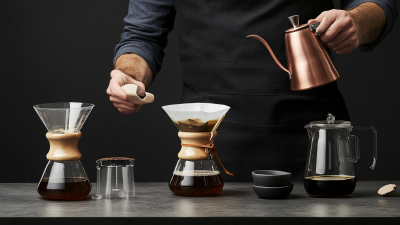
The Definitive Handbook for Mastering Barista Coffee Techniques and Trends
-
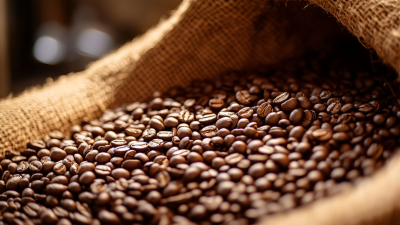
How to Find the Top 7 Barista Coffee Manufacturers for Global Procurement
-
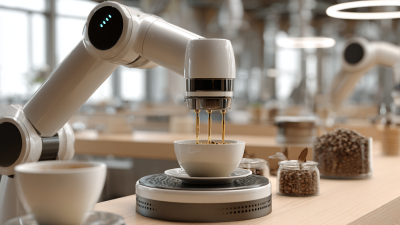
Exploring the Unique Features and Ideal Applications of the Best Coffee Robot in Global Markets
-

10 Digital Tips for Choosing the Best Robot Coffee in Singapore
-
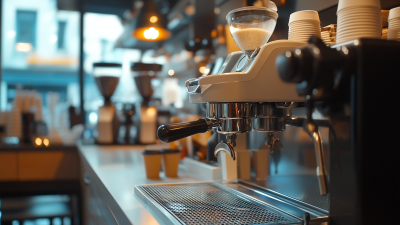
Revolutionizing Cafes with the Innovative Crown Coffee Robot
-
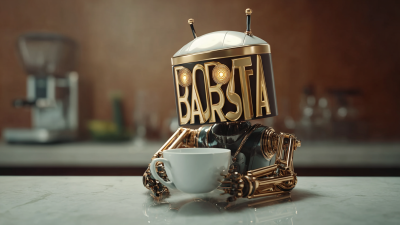
Global Procurement Embraces the Excellence of Best Robot Barista From China's Premier Manufacturing Industry